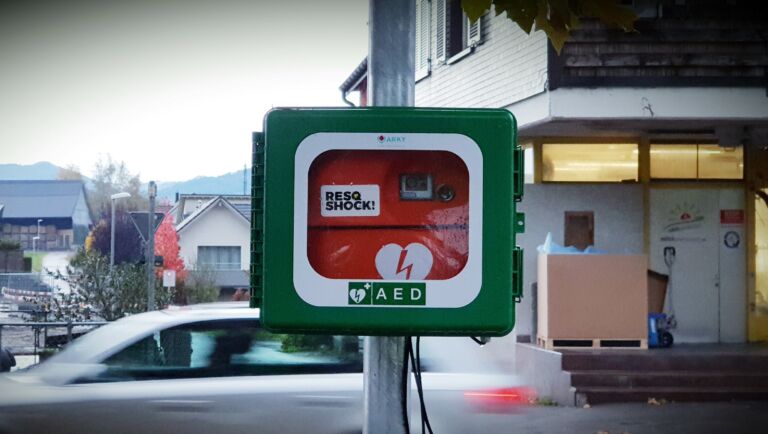How do I know if there is a defibrillator nearby?
A few years ago, National Councillor Bea Heim suffered a circulatory arrest in the Federal Parliament building. A knowledgeable colleague was present and a defibrillator was within reach. Heim survived.
Shortly afterwards, she suggested that defibrillators be installed everywhere where many people come and go. "When someone has a circulatory arrest, every second counts," she said. You have to be able to act quickly. "This requires that people know that there are defibrillators and where they are.
Not all locations known
The emergency number 144 can tell you the nearest location. However, only some of the publicly accessible defibrillators are known to 911.
Comparatively low survival rate
Bea Heim looks to Denmark as a European role model. "In Switzerland, we have a relatively low survival rate for people with sudden circulatory arrest in comparison. We could improve massively." According to the Swiss Heart Foundation, for nine out of ten people with circulatory arrest, any help outside the hospital comes too late.
Storage and locations
The mounting of a defibrillator (AED) must be done in a suitable place. Special wall mounts or wall boxes are available. However, easy recognition and removal, safe storage and regular visual inspection should be possible without visual changes (e.g. glass display cases). The more often the defibrillator is seen, the more likely it is to be remembered in an emergency situation. Obstruction of access or any blocking method for removal should be strictly avoided. Storage next to hazardous substances is also discouraged.
The locations should be chosen in such a way that they always fulfil the following conditions:
- Good accessibility, at all times when people are in the building or on the premises.
- Central position to be easily visible and accessible from all directions.
- Maximum distance at a brisk walk of 2 minutes.
- The defibrillators should be placed in holders from which they can be easily and self-explanatorily removed at any time.
- The brackets should also be placed according to these aspects in buildings with disabled access.
- If necessary, children should also be able to reach the height of the brackets.
- If there are other materials for emergencies (fire extinguishers, hose connections, first aid boxes), they should be placed and made available together. This creates emergency or rescue islands.
- Temperature and humidity should correspond to the normal room temperature and not fluctuate too much.
- When entering the room, the defibrillator should be clearly and unambiguously recognisable. The necessary lighting should be switched on automatically when entering (e.g. by motion detectors).
- An audible alarm at withdrawal can be helpful in the individual setting.
- Defibrillators placed outside a building, called Public Access Defibrillators (PAD), should be kept in a heated wall box.
Recognizability - AED signs?
The defibrillators (AED) must be faultless in stress situations, findable and recognisable at all times, even if the last refresher was some time ago. However, the labelling is not very well known, so the intended standard logo, or the standard pictogram (AED instruction sign) should be used.
